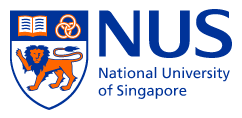Graphene gives protection from intense laser pulses
21 Aug 2011. Scientists at the National University of Singapore (NUS) , DSO National Laboratories and University of Cambridge have jointly announced a new world record in broadband non-linear optical absorption behavior using single-sheet graphene dispersions in a variety of heavy-atom solvents and film matrices (G.K. Lim et al, Nature Photonics (2011):doi:10.1038/nphoton.2011.177). Graphenes are single sheets of carbon atoms bonded into a hexagonal array. In nature, they tend to stack to give graphite. In this breakthrough, the scientists have developed a way to prevent the restacking of these sheets by attaching alkyl surface chains to them, while retaining the integrity of the nano-graphene pockets on the sheets. This makes a solution-processable material that can be dispersed into solvents and also into film matrices. As a consequence, the scientists observed a new phenomenon. They found that the dispersed graphenes exhibit a giant nonlinear optical-absorption response to intense nanosecond laser pulses over a wide spectral range with a threshold that is much lower than found in any material. This sets a new world record in energy limiting onset of 10 mJ/cm^2 for a linear transmittance of 70% These materials can now be used for protection of sensitive sensors and devices from laser damage, and for optical circuits.
"We found from ultrafast spectroscopy measurements that dispersed graphene sheets switch their behavior from induced optical transparency which has been well known, to induced optical absorption depending on its environment. This is a remarkable finding that shows graphene can still surprise!" says Prof Lay-Lay Chua, principal investigator of the ONDL graphene team at NUS.
"This is an important first step in the development of practical graphene nanocomposite films for applications where the graphene sheets remain fully dispersed. The induced change in their nonlinear optical behavior is amazing and highly practical!" says Prof Geok-Kieng Lim, principal investigator of the DSO graphene team. Prof Geok-Kieng Lim is also an adjunct professor at the Department of Physics, NUS.
The work at University of Cambridge was performed at the Cavendish Laboratory in the group of Prof Sir Richard Friend, who is also the Tan Chin Tuan Foundation Centennial Professor of NUS. The work in Singapore is supported by the Temasek Young Investigator's Award, NUS-DSO Project Agreement and Ministry of Education.

